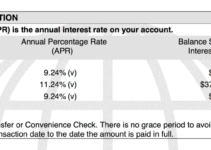Embark on a journey of financial empowerment with the Personal Finance Model 2024. This comprehensive guide provides a roadmap to navigate the ever-evolving landscape of personal finance, empowering you to make informed decisions and achieve your financial goals.
From budgeting and cash flow management to investment strategies and retirement planning, this model covers all aspects of personal finance, arming you with the knowledge and tools to take control of your financial future.
Understanding Personal Finance Models

Personal finance models are frameworks that help individuals manage their financial resources effectively. They provide a structured approach to understanding income, expenses, savings, and investments.
There are several types of personal finance models, each with its unique purpose. Some common models include:
Budgeting Models
- 50/30/20 Rule:Allocates income into 50% for needs, 30% for wants, and 20% for savings and debt repayment.
- Envelope System:Physical or digital envelopes are used to allocate cash for specific categories.
- Zero-Based Budgeting:Every dollar of income is assigned to a specific category, leaving no balance at the end of the month.
Investment Models
- Modern Portfolio Theory:Optimizes investment portfolios based on risk tolerance and diversification.
- Value Investing:Seeks undervalued stocks with potential for growth.
- Technical Analysis:Uses historical price data to identify trading opportunities.
Key Trends Shaping Personal Finance in 2024
The personal finance landscape is constantly evolving, influenced by a multitude of factors. In 2024, several key trends will continue to reshape the way individuals manage their finances.
Technology, economic conditions, and societal changes will significantly impact personal finance in the coming year. By understanding these trends, individuals can make informed decisions to optimize their financial well-being.
Technology
Technology continues to play a transformative role in personal finance. The rise of artificial intelligence (AI) and machine learning (ML) is automating tasks, providing personalized financial advice, and enhancing security.
- AI-powered chatbots:Offer real-time assistance with budgeting, debt management, and investment decisions.
- Robo-advisors:Use algorithms to create and manage personalized investment portfolios.
- Blockchain technology:Enhances the security and transparency of financial transactions.
Economic Factors
Economic conditions can significantly impact personal finances. In 2024, inflation, interest rates, and the overall economic climate will influence financial decisions.
- Inflation:Rising prices can erode purchasing power and increase the cost of living.
- Interest rates:Changes in interest rates affect the cost of borrowing and saving.
- Economic growth:A strong economy can boost job security and income growth, while a recession can lead to job losses and financial strain.
Social Changes
Social changes, such as the aging population and the rise of the gig economy, are also shaping personal finance.
- Aging population:As people live longer, they face unique financial challenges, such as retirement planning and healthcare expenses.
- Gig economy:The increasing prevalence of freelance and contract work presents new opportunities and challenges for financial management.
Budgeting and Cash Flow Management
Effective personal finance management revolves around budgeting and cash flow management. Budgeting involves creating a plan for allocating income and expenses, while cash flow management ensures that there’s sufficient liquidity to meet financial obligations.
There are various budgeting techniques, such as the 50/30/20 rule, zero-based budgeting, and envelope budgeting. The 50/30/20 rule allocates 50% of income to needs, 30% to wants, and 20% to savings and debt repayment. Zero-based budgeting requires assigning every dollar of income to a specific category, leaving no room for unaccounted funds.
Envelope budgeting involves physically allocating cash into envelopes for different spending categories.
Cash Flow Management Strategies
Cash flow management strategies include:
- Tracking expenses:Monitoring spending habits helps identify areas where adjustments can be made.
- Creating a budget:A budget provides a roadmap for allocating income and ensuring expenses align with financial goals.
- Increasing income:Exploring opportunities for additional income sources can supplement cash flow.
- Reducing expenses:Identifying and eliminating unnecessary expenses can free up cash for other priorities.
- Negotiating bills:Contacting service providers to negotiate lower rates or payment plans can improve cash flow.
- Using technology:Budgeting apps and financial management software can simplify expense tracking and budgeting.
By implementing effective budgeting and cash flow management strategies, individuals can gain control over their finances, reduce financial stress, and achieve their financial goals.
Investment Strategies and Asset Allocation
Investing is a crucial aspect of personal finance, enabling individuals to grow their wealth and secure their financial future. There are various investment strategies available, each with its own risk-return profile. Understanding these strategies and how to allocate assets effectively is essential for successful investing.
Risk and Return
- Risk:The potential for an investment to lose value or generate negative returns.
- Return:The profit or income generated from an investment, typically expressed as a percentage.
Generally, higher-risk investments have the potential for higher returns, while lower-risk investments tend to generate lower returns. Investors need to determine their risk tolerance and investment goals to choose an appropriate strategy.
Investment Strategies
- Growth Investing:Focuses on investing in companies with high growth potential, aiming for capital appreciation over the long term.
- Value Investing:Involves investing in undervalued companies with strong fundamentals, aiming to purchase them at a discount to their intrinsic value.
- Income Investing:Prioritizes investments that generate regular income, such as dividends from stocks or interest from bonds.
- Speculative Investing:Involves investing in high-risk, short-term investments with the potential for significant gains or losses.
Asset Allocation, Personal Finance Model 2024
Asset allocation is the process of distributing investments across different asset classes, such as stocks, bonds, and real estate. It helps diversify portfolios and reduce risk. The optimal asset allocation depends on factors such as investment goals, risk tolerance, and time horizon.
Diversification
Diversification is a key principle in asset allocation. It involves spreading investments across different asset classes and within each asset class. This helps reduce risk by ensuring that the performance of one asset class or investment does not significantly impact the overall portfolio.
Retirement Planning and Savings
Retirement planning is crucial for securing your financial well-being in your golden years. It involves setting aside funds and making investment decisions to ensure you have sufficient income to maintain your desired lifestyle after you stop working.There are various types of retirement accounts available, each with its own advantages and tax implications.
Understanding the different options can help you tailor your retirement savings strategy to your specific needs.
Maximizing Retirement Savings and Income
To maximize your retirement savings, consider the following strategies:
- Start saving early: The power of compound interest can significantly grow your savings over time.
- Contribute consistently: Set up automatic contributions to your retirement accounts to ensure you save regularly.
- Take advantage of employer-sponsored plans: Many employers offer 401(k) or 403(b) plans with matching contributions, effectively increasing your savings.
- Consider catch-up contributions: Individuals over age 50 can make additional contributions to certain retirement accounts.
- Maximize tax benefits: Utilizing tax-advantaged retirement accounts, such as IRAs and Roth IRAs, can reduce your tax liability and boost your savings.
In addition to saving, consider strategies to maximize your retirement income. These include:
- Plan for multiple income streams: Diversify your retirement income sources to reduce risk and ensure a steady flow of funds.
- Consider annuities: Annuities provide guaranteed income for a specified period or your lifetime.
- Explore part-time work or consulting: Continuing to work part-time or consulting in retirement can supplement your income.
- Downsize your expenses: Re-evaluate your lifestyle and consider downsizing your home or reducing expenses to lower your living costs.
Debt Management and Credit Building: Personal Finance Model 2024
Debt management and credit building are crucial aspects of personal finance. Understanding the different types of debt, their impact, and effective debt management strategies is essential for financial stability. Additionally, building a strong credit history can open up opportunities for favorable loan terms and access to financial products.
Understanding Debt
Debt can be categorized into two main types: secured and unsecured. Secured debt is backed by collateral, such as a house or car, while unsecured debt is not. Common types of secured debt include mortgages and auto loans, whereas credit cards and personal loans are examples of unsecured debt.
It’s important to recognize that debt can have both positive and negative consequences, depending on how it’s managed.
Debt Management Strategies
Effective debt management involves creating a plan to pay off debt while minimizing interest charges and avoiding financial distress. One common strategy is the debt snowball method, where you focus on paying off the smallest debt first while making minimum payments on others.
Alternatively, the debt avalanche method prioritizes paying off the debt with the highest interest rate first. Additionally, debt consolidation can be an option to combine multiple debts into a single loan with a lower interest rate.
Building Credit
Building a strong credit history is essential for accessing favorable financial terms. Factors that affect credit scores include payment history, credit utilization ratio, and length of credit history. Making timely payments, keeping credit balances low, and maintaining a mix of different types of credit can help improve your credit score.
Additionally, monitoring your credit report regularly for errors or suspicious activity is crucial.
Impact of Debt on Personal Finances
Excessive debt can strain your budget, limit your financial flexibility, and negatively impact your credit score. High-interest debts, such as payday loans or credit card debt, can trap you in a cycle of debt and hinder your ability to save and invest.
It’s crucial to manage debt responsibly, prioritize essential expenses, and seek professional help if needed to avoid financial distress.
Financial Planning and Goal Setting

Financial planning is crucial for managing your finances effectively and achieving your financial goals. It involves creating a roadmap that Artikels your financial objectives, strategies, and actions to reach them. Setting clear financial goals provides direction and motivation, helping you stay focused and make informed decisions.
Creating a Financial Plan
Developing a comprehensive financial plan involves several key steps:
- Assess Your Current Financial Situation:Determine your income, expenses, assets, and liabilities to establish a baseline.
- Define Your Financial Goals:Identify your short-term, mid-term, and long-term financial objectives, such as saving for retirement, buying a home, or paying off debt.
- Create a Budget:Establish a plan for allocating your income to cover expenses, savings, and investments.
- Develop Investment Strategies:Determine how you will invest your savings to grow your wealth and meet your goals.
- Plan for Retirement:Estimate your retirement expenses and develop a strategy to save and invest for your future.
- Manage Debt:Create a plan to pay off debt effectively and improve your credit score.
- Monitor and Adjust:Regularly review your financial plan and make adjustments as needed to ensure you are on track to meet your goals.
Behavioral Finance and Personal Finance
Behavioral finance studies how psychological factors influence financial decision-making. It recognizes that individuals often make financial decisions that deviate from rational economic models. Understanding behavioral finance can help us identify and overcome biases that can lead to poor financial outcomes.
Common Financial Biases
- Confirmation bias:Tendency to seek and interpret information that confirms our existing beliefs.
- Framing effect:Making different decisions depending on how options are presented.
- Loss aversion:Fear of losing money is more potent than the desire to gain.
- Present bias:Tendency to prefer immediate rewards over future benefits.
- Overconfidence:Exaggerated belief in our abilities and knowledge.
Overcoming Financial Biases
- Be aware of your biases:Recognize that you are not immune to these psychological influences.
- Seek objective advice:Consult with a financial advisor or trusted friend to get an outside perspective.
- Use tools and strategies:Implement automated savings plans, budgeting apps, or other tools to reduce the impact of biases.
- Educate yourself:Increase your financial literacy to make more informed decisions.
- Practice patience:Avoid impulsive decisions and take time to consider your options.
By understanding and addressing behavioral finance biases, individuals can make more rational financial decisions and improve their financial well-being.
Financial Education and Resources
Financial literacy is crucial for individuals to make informed financial decisions and achieve financial well-being. Numerous resources are available to enhance financial knowledge, including books, online courses, workshops, and financial advisors.
Financial advisors provide personalized guidance and support in managing finances, such as investment planning, retirement planning, and debt management. Choosing the right financial advisor requires thorough research, considering their qualifications, experience, and fees. Look for advisors who are certified, have a strong track record, and align with your financial goals.
Resources for Financial Education
- Books: Personal finance books offer comprehensive information on various financial topics, from budgeting to investing.
- Online courses: Online platforms provide structured courses on financial literacy, often with interactive exercises and assessments.
- Workshops: Financial workshops are short-term programs that cover specific financial topics, such as retirement planning or debt management.
- Non-profit organizations: Non-profit organizations, such as the National Financial Educators Council, offer free or low-cost financial education programs.
- Government agencies: Government agencies, like the Securities and Exchange Commission (SEC), provide educational materials and resources on financial topics.
Last Recap
As you delve into the Personal Finance Model 2024, you will gain a deep understanding of financial principles, emerging trends, and effective strategies. Embrace this opportunity to transform your financial well-being and secure a brighter financial future.
Question Bank
What are the key trends shaping personal finance in 2024?
The rise of fintech, the impact of inflation, and the growing importance of financial literacy are among the key trends influencing personal finance in 2024.
How can I create a comprehensive financial plan?
Follow a step-by-step process that includes defining your financial goals, assessing your current financial situation, and developing a plan to achieve your goals.
What are the different types of investment strategies?
Common investment strategies include growth investing, value investing, income investing, and diversification.








